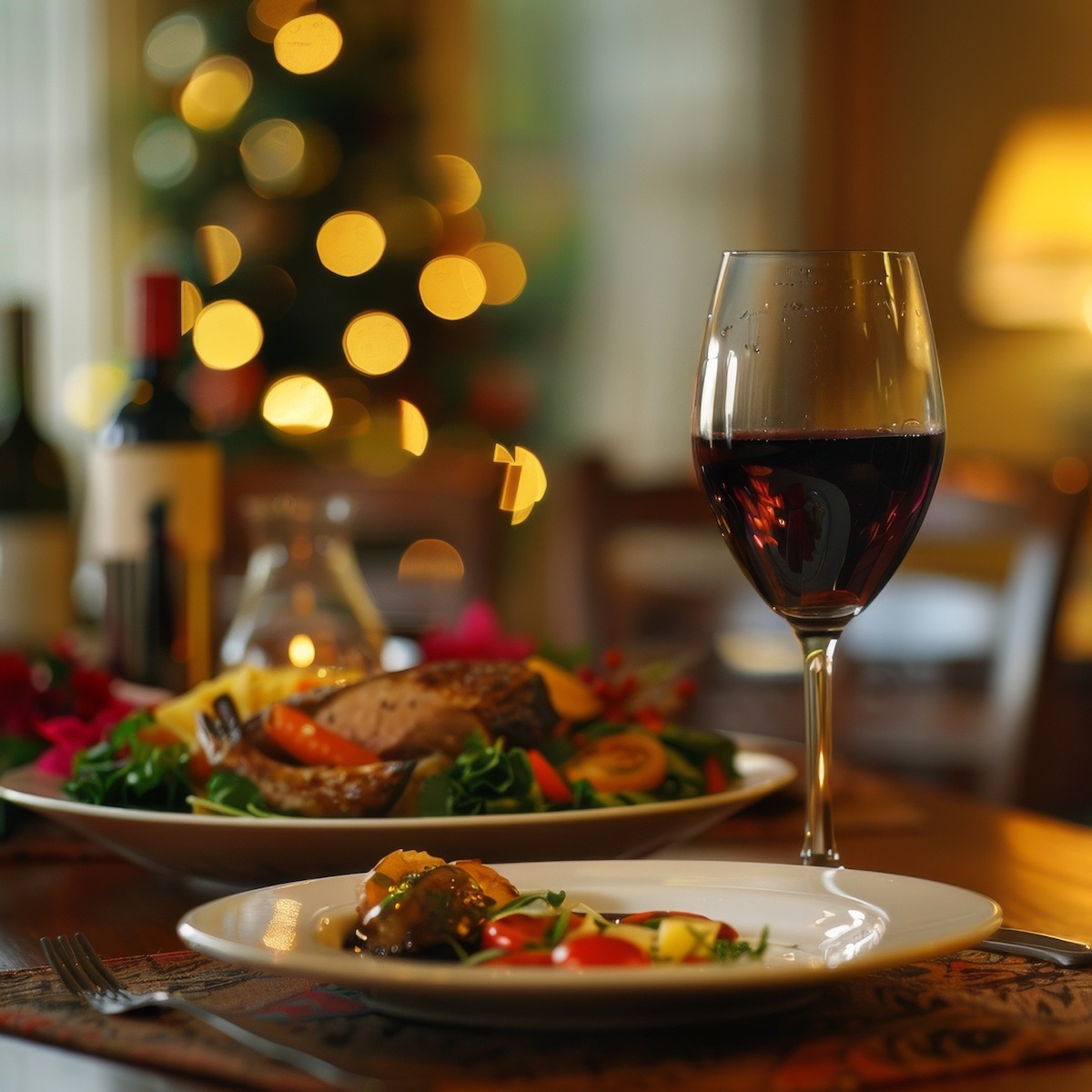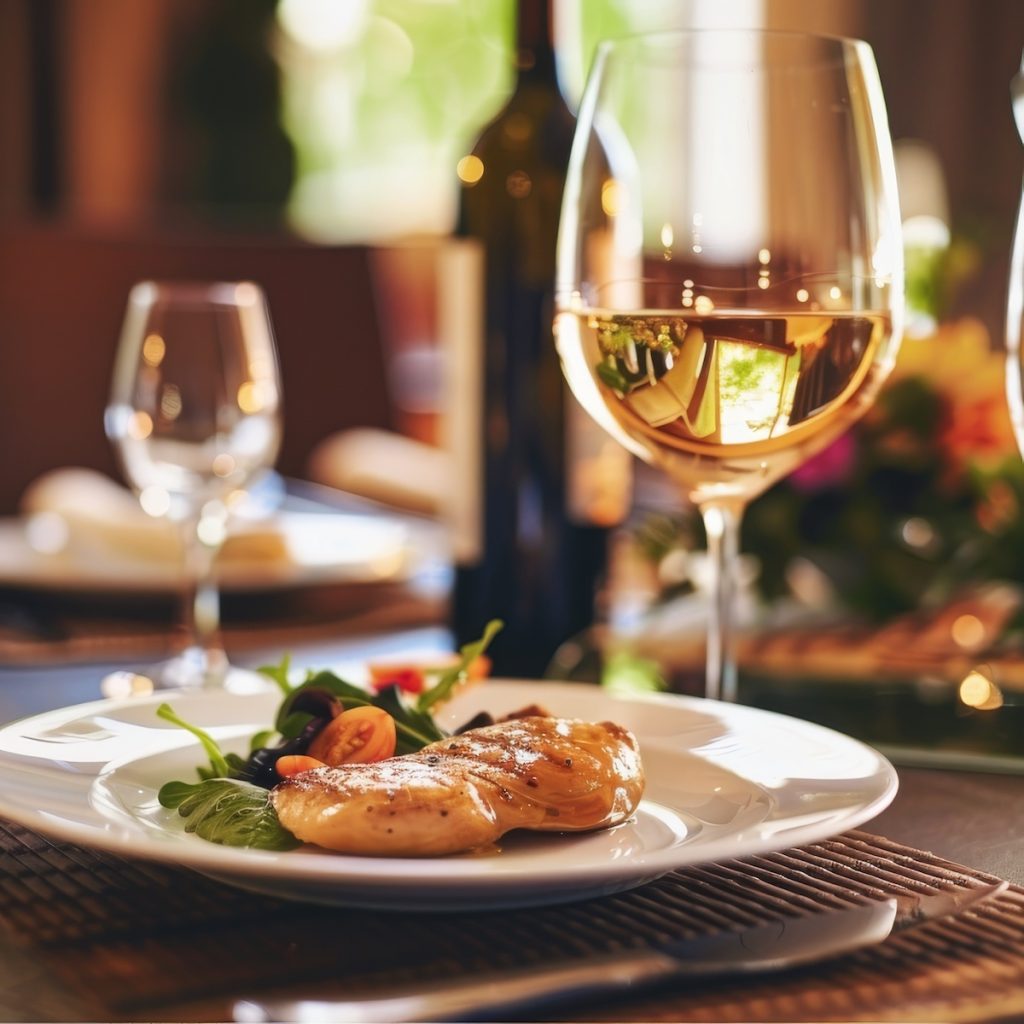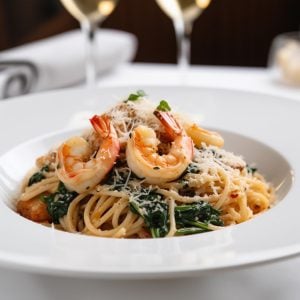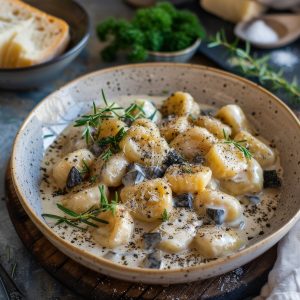How to Pair Food and Wine
Even the most experienced cook can feel a little inadequate when faced with pairing food with wine. It used to be red with meat, white with fish or chicken, and I’m sure many of you still look at it that way, but which red wine with red meat? – Cabernet Sauvignon, Pinot Noir, Barbarossa, Shiraz?
The same goes for white wine. There are hundreds of white grape varieties, including the more well-known Chardonnay, Pinot Grigio, Sauvignon Blanc, and Semillon, plus all those you probably never heard of, like Azal, Inzolia, and Juhfark. So, which grape goes best with what you are serving?
With some wines going for literally thousands of dollars a bottle and flowery reviews that seem to be written in another language (nose? finish? terroir?), it’s no wonder many of us close our eyes and grab a bottle. Either that, or we serve whatever our guests have brought over and hope for the best.
With a little guidance and a few pairing rules, anyone can choose a bottle of wine to go with a specific dish. So, take a deep breath, and let’s look at food and wine pairing, knowing that at the heart of it all, it’s really no more difficult than “Drink what you like.”
Drum Roll Please – A Little History
First up, people have been making and enjoying wine with food for thousands of years. I doubt that Roman centurion ever complained that the red wine he was served didn’t go with his salt cod, and he’d rather have a white, thank you very much. Please don’t go fact-checking – I have no idea whether the Romans ate salt cod, but my point is simple: people have been drinking wine with their food for eons, and if we try to overthink that relationship, we might miss out.
There is no doubt that food and wine go together. Before global or even intra-continental shipping, wines were made and drunk locally, and that old adage “What grows together goes together” certainly held true. Now, when we can get great wines made literally worldwide, the basic rule still applies: Grapes grow. Vegetables grow. Meat grows. Fish grows.
It’s All About Terroir
You may have noticed that I mentioned “terroir.” Terroir is a French term that really doesn’t have a one-word translation into English. Terroir is a wine’s character from where it was grown – soil composition, amount of sunlight, what is growing near the grapes, and microclimate. Every environmental factor you can think of shapes the final terroir of a particular wine.
I think this is where Old World (European) wines differ from New World wines—most Old World winemakers showcase terroir, while many New World wineries play down terroir in favor of a more consistent, mass-market appeal. Regardless, the wines of northern Italy go well with northern Italian food, just like the wines of Alsace go well with Alsatian foods. It’s all about the terroir.
The great thing about pairing wine and food is that not only does the wine enhance the food, but the food enhances the wine. Wine and food are happy examples of the whole being greater than the sum of its parts. For example, I often find that if I have a wine that’s a bit tannic – one that makes my mouth feel really dry and like it’s turning inside out – serving it with meat really balances it out nicely.
Like I said earlier, up until fairly recently, the rule of thumb for pairing wine and food was “Red wine with red meat, white wine with white meat and fish.”&bsp; This isn’t necessarily a bad rule to follow, but I think it has more to do with matching body and complexity than it does with matching colors.
For example, if I stew or braise a chicken in wine and stock, it will have a complex and deep flavor that I prefer to pair with a complex wine. If I poach a chicken breast, I’ll most likely end up with a more simply-flavored, much lighter dish that I might want to pair with a light wine.
While I find that red wines are generally more complex than white wines, this rule doesn’t always hold. Often, it is a subjective comparison, and you have to decide for yourself what you think works best. This brings us back to “Drink what you like.”

Go Taste Wines
If you don’t know what you like, I suggest going to a wine tasting. In most states, many local wine shops offer free tastings on weekend afternoons, and if you live near Trader Joe’s, I know that they also offer wine tastings. Check with your local stores.
This is not true in Pennsylvania, where I now live, but some “big box” stores, such as Total Wine, BevMo, or even your local ABC Store, have a tasting and their own experts you can talk to and ask questions. If you tell them that you think you might prefer a light, fruity wine to a warm, spicy wine, they can suggest wines for you to try so you’ll know if you are right!
How Sweet It Is
Sweetness is a big consideration when pairing foods and wine. Wines range in sweetness from very dry (not sweet at all) to syrupy dessert sweetness. The general rule is NOT to have your wine sweeter than you are serving. Therefore, you’ll want to serve a savory meal with dry wine.
Many dishes that have been seared either in the final cooking or as a step along the way (braises and stews) and those that contain sweeter vegetables, such as carrots and parsnips, can be paired with a sweeter wine. Again, make sure the wine isn’t sweeter than the dish.
Sweet desserts go very nicely with a dessert wine. As there are exceptions to every rule, sparkling wine is an exception to this rule. Something about the bubbles sets these wines apart from others, making them appropriate to serve with almost any course. This is a nice thing because while many people think of Champagne and other sparkling wines strictly for toasting, they are lovely paired with “regular food,”too. Give it a try sometime.
There is one rule of wine pairing that doesn’t have any exceptions. And that rule is that wine doesn’t go well with vinaigrette. The acid in a vinaigrette somehow deadens the palate, making the wine taste almost metallic and unpleasant.
If you want to serve wine with a salad course, use a creamy dressing, such as creamy blue cheese or Green Goddess. This brings me to another wine pairing point – just as you can sour milk by adding some vinegar, you can also sour a cream sauce by serving an acidic wine. A buttery wine like an oaked Chardonnay will pair much more effectively with cream sauce than a lemony/acidic wine.
Of course, if you consider the flavor profile of the wine you will serve before you start cooking, you can add it to the dish to enhance the food and wine pairing. For example, if the back of your bottle or the wine-tasting notes indicate that the wine has many herbal components, you might consider adding fresh herbs to your dish to complement the wine.
If the wine contains apple notes, think about making a pork dish since apple and pork are such a nice pairing. Knowing what your wine tastes like gives you a better chance of cooking something complementary. That’s why it’s okay to accept a bottle of wine as a host/hostess gift and then put it away for later. The wine they brought you as a thoughtful gift might not go with what you’ve cooked, so serving a “known” wine with your meal is best.
Conclusions
With everything I just said, I have touched on 1% of the information about pairing food and wine. There are books written on this subject and websites and blogs devoted to discussing wine and which ones should be served with what foods. I’ll discuss this subject in upcoming posts and get a few experts to help with the discussion.
It still comes down to serving what you enjoy and can afford with your meals. Just because a big, earthy Cabernet may go well with a juicy Porterhouse steak, don’t serve it if you don’t like Cabernet Sauvignon.
As always, I would love to hear what you have to say about some of your favorite food and wine pairings. We can all learn from sharing ideas especially with a topic like this one.








6 Responses
Since I’m an ole “rednek”, I don’t know that much about wine or what wine goes with what foo.. I do have some red and some white that I use in cooking. I do sometimes think about just what would be a good wine to go with a bowl of Texas type chili or a pot of Cajun red beans and rice, or maybe some southern beef tips over rice. What would go good with turnip greens and smothered pork chops?
Hi LADawg, so much has to do with personal taste but here are some wine suggestions I might try.
Texas Chili – Shiraz or Malbec
Beans & Rice – Zinfandel
Pork Chops – Pinot Noir
Those do sound like a good choice for the first two, but so does a cold Old Milwaukee Beer with the first two, Then maybe a glass of unsweetened ice tea with the pork chops.
I can’t remember the last time I enjoyed a cold frosty Old Milwaukee but beer is a great choice. Unsweetened ice tea goes with anything if you are not indulging in an adult beverage. – RG
Hi,
I wish people would stop saying things like this:
“While I find that, in general, red wines are more complex than white wines, the rule doesn’t always hold”
Have you ever tried an aged Loire Valley Chenin Blanc? White Burgundy? Amontillado/Palo Cortado/Oloroso Sherry? Grand Cru Alsace Gewurztraminer or Pinot Gris? Bottle aged Riesling (Alsatian, Australian, German or NZ)? Canadian White blends (ie Stratus)? Sauternes? Jurancon?
All these wines are terrifically complex. Yes, the average $5 Pinot Grigio isn’t complex, but neither is the average $5 Cabernet Sauvignon.
People need to experiment more with whites. They are more flexible with food and there are loads of different styles from dry, off-dry, acidic, dessert, fat and oily, sparkling, etc. I like reds as much as the next person, but this ignorance about whites has to stop.
Some suggestions – try the ones I mentioned above, and some general pairing info:
Cream sauce – oaked Chardonnay
Asian food (spicy) – Off dry Riesling (German or New Zealand)
Pork, turkey or any fatty white meat – Dry Riesling (Alsace or Australian)
Foie Gras or pate – Sauternes or Jurancon
soft cheeses such as Brie, etc – white wines such as Champagne, Chardonnay, anything from Alsace, Riesling, etc.
Excellent points Tim and thank you for sharing. I will be checking out your blog to read more about wines and maybe you would be interested in contributing something for my readers.
I agree that there are great examples of both red and white complex wines on the market and you certainly offered some great choices of complex whites but I think the addition of tannins in red wine generally make them more complex than most whites purchased by consumers. People I know don’t purchase or for that matter cellar their red wines to a peak age for drinking so I can’t see them cellaring their whites. But you bring up a great question – are those tannins adding complexity or a flavor component? I think complexity but that’s just my opinion. – RG
Simplified:
-Full bodied wines with full flavor foods
-Lighter bodied wines with lighter foods
-High acid whites with shellfish
-White wine with poultry and white fish
-Red wines with red sauce dishes and red meat (generally)
One of the best pairings I ever had made absolutely no sense and did not apply to any of the common rules… Why was it good? Because I took my favorite bottle of wine and paired it with my favorite dish.. And it was great!
Thanks for some good pairing tipss especially your last one. Could not agree more. Good looking web site, do you ship to PA? – RG
Enjoyed your blog and found it very informative. Pairing of wines has always been a stumbling block for me. Thanks for making some excellent points.
You are very welcome Deana and I hope to have a lot more information on wine pairing in the future plus some interviews with experts. – RG
Hello! Almost everyone cooks with wine or pairs food with wine–almost always tasty results? How about food and beer? It’s a slow moving concept although it’s catching on. Beer (specifically a Porter) makes a great marinade and a nice tenderizer of a roast. Any experience, recipes, or thoughts on this?
Hi Nathan, there are lots of sites talking about food and beer plus the food magazines are getting into it. I went to a chef’s table dinner a few weeks ago where every dish was paired with a beer made by local Philadelphia breweries. I don’t have that many recipes that use beer although have you seen Bert’s Barbecue Ribs? It uses a bottle of beer in the process and the results are fantastic. I’ll start working on some posts using beer and see if I can find some information about pairing beer and food. Thanks for the suggestion. – RG